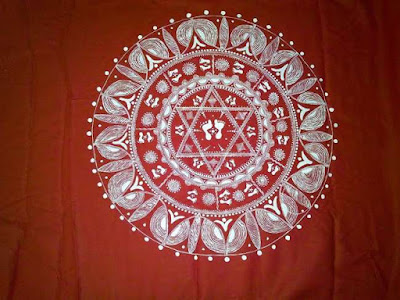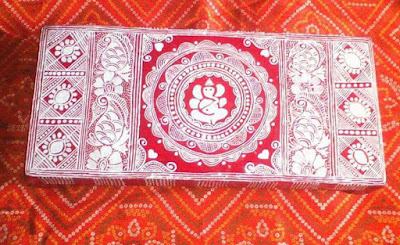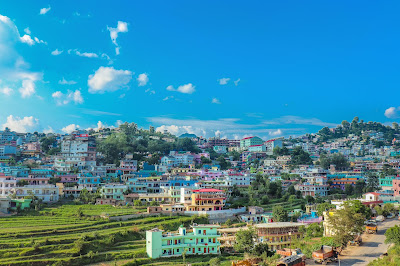Munsiyari- the most scenic destination of Uttarakhand
Munsiyari is a beautiful hill station in Uttarakhand situated at the foothills of the huge Himalayas. This hill destination under the Pithoragarh district of the state is famous worldwide for its enchanting atmosphere. Located at an altitude of 2300 meters, most of Munsiyari is covered with a thick sheet of snow during winters. Due to the snowy peaks here, this hill station is called 'Mini Kashmir' of Uttarakhand. This mountain town close to the Tibet and Nepal border is nothing less than a heaven for adventure travelers. Apart from this, Munsiyari is also famous for Himalayan flora and wildlife. In this blog, know about the most beautiful places in Munsiyari where you can plan during this summer.
 |
| The Panchachuli Range Courtesy: H Satish |
Brithi Falls
In the natural treasures of Munsari, you can plan a trip to the Brihati Falls here. On the way to Munsiyari, this place is an ideal break for mental and spiritual peace. To reach here you have to travel 35 km from the main city. This waterfall with its amazing scenery is also known as the most special picnic part of the Kumaon division. The lush green environment with a hilly landscape serves to delight the tourists. Apart from all this, the place is also known for hiking and trekking.
 |
| Birthi Falls Source: Google |
Khaliya top
Khaliya is a paradise for Trekkers, A happy hunting ground for photo shooters and encyclopedia for bird watchers. Khaliya top is a pleasant weekend trek that not many people have ventured or even heard off. The special views from Khaliya top of the Panchachuli and Nanda Devi range are the heaven for trekkers. Which provides a grand view and elevation of the Himalayas in a very short time. Khaliya Bugyal is an alpine meadow located in Munsyari, District Pithoragarh Uttarakhand.
 |
| The Khaliya Top Source: Google |
Kalamuni top
The Kalamuni top on the way to Munsiyari city is also one of the nearby tourist destinations. Located at a distance of 14 km from the main city, this hill destination is situated at an altitude of 9600 feet. This place full of natural scenery is also famous for its religious significance. There is an ancient temple dedicated to Maa Kali, due to which this place is known as a sacred place in the cities and villages nearby. Apart from the religious significance, the amazing views of the Panchachuli mountain range make this place special. The temple here follows a traditional belief under which devotees tie bells in the temple premises and pray to the Goddess for the fulfillment of their wishes.
 |
| The majestic view from Kalamuni Top Source: Google |
Thamri kund
Apart from the beauty of the hill, you can plan a visit to Thamri Kund here. Thamri Kund is a perennial lake which is also considered to be the freshest water lake under the Kumaon Valley. An exciting trek route surrounded by thick paper trees leads to this lake. It takes about 8 hours to reach this lake from the main city via trek. So if you want to come here, then leave the city early in the morning. Thamri Kund is surrounded by alpine trees which provide a spectacular view of the place. If you have good luck, you can also see Kasturi deer drinking water here.
 |
| The Thamri Kund Source: Google |
Maheshwari Kund
Apart from Thamri Kund, you can also plan a tour of Maheshwari Kund here. Maheshwari Kund, located some distance away from Munsiyari, is an ancient lake with which mythological beliefs are also associated. It is believed that when the villagers of Munsiyari drained this lake to take revenge, the Yaksha decided to take revenge on them. After which this entire city was hit by drought. The villagers apologized to the Yaksha for saving the village. The tradition of asking for forgiveness is followed even today. Maheshwari offers an amazing form of the Panchachuli mountain range of Kund.
 |
| The Maheshwari Kund Source: Google |
Madkot
Apart from the above-mentioned places, you can plan a trip to Madkot located at a distance of 5 km from Munsiyari. Madakot is known for its natural pool of hot water. The source of hot water originating from the land is believed to be capable of curing diseases like skin diseases, body aches, and arthritis. This beautiful place is situated in a quiet environment separate from urban congestion, where the tourists like it very much. From Munsiyari to Madkot you can reach via cab service.
 |
| Madkot , Munsiyari Source: Google |
These were some attractive places located around Munsiyari, where you can make a plan any month of the year. If you ever get a chance to visit Pithoragarh, do plan a trip to Munsiyari as in local language there is a famous saying “सार संसार एक मुन्स्यार” which means there no beautiful place like Munsyari on this earth.





































